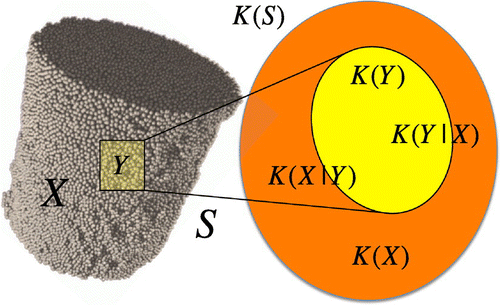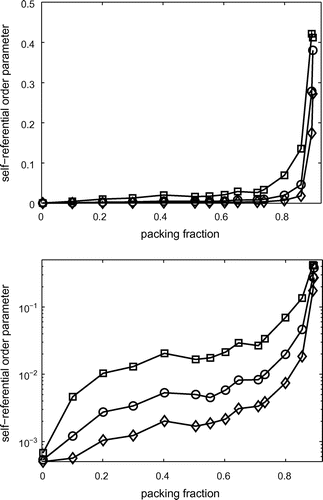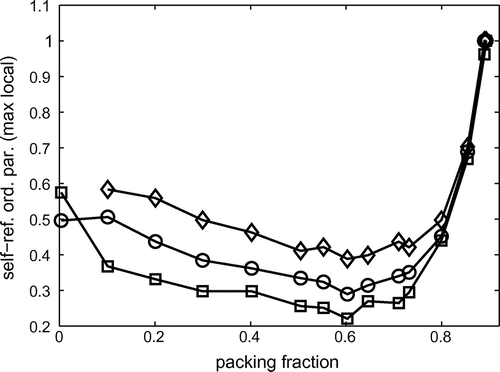Figures & data
Fig. 1 (colour online) In the absence of a pre-defined template reference structure, one can use a portion () of the structure to describe the whole structure
. The knowledge about the portion
can reduce the uncertainty about the rest of the structure
. Kolmogorov complexity, here denoted with
and
, measure the information contained in
and
, respectivelly. For instance, in the case in which the rest of the structure
is completely determined by the knowledge of the portion
, we have
. In this case, the conditional information about
given
,
, is equal to zero.

Fig. 2 (colour online) Snapshots of the local self-referential order parameter . The local portion
is a square of edge 5 disc diameters. The pictures are a heat map (blue low red high, color online) representing the relative values of
for a portion centred in each given part of the packing.
indicates the packing fraction of each sample. Colourmap is rescaled for each image.


